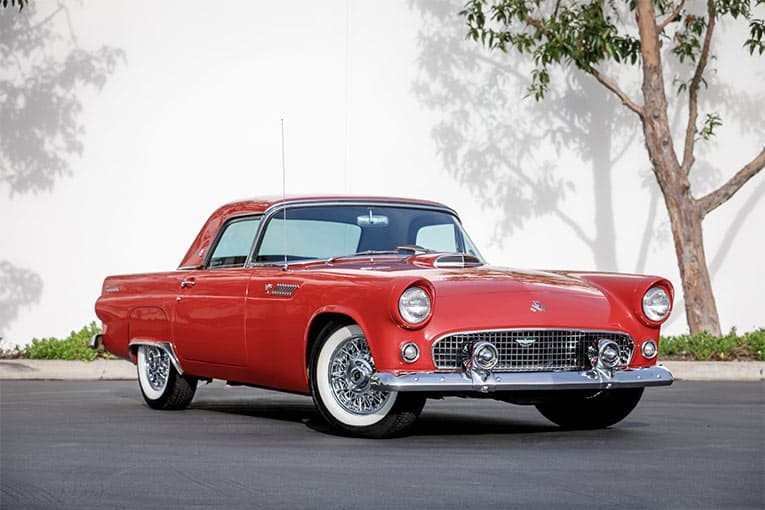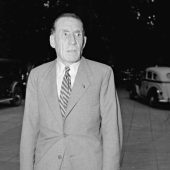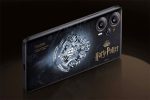Two men, Louis D. Crusoe and George Walker, were primarily responsible for the birth of the Ford Thunderbird. Both were devoted to the automobile and its constant development and refinement. Crusoe, a millionaire lured out of retirement by Henry Ford II, was a businessman with a solid “feel” for the automobile market. Walker, later a Ford vice president and chief stylist, is described by contemporaries as a “stylist with the soul of an artist burning in his heart.”
Official approval to develop thenew Ford sports car came in a product letter dated Feb. 9, 1953. In it, May 1, 1953, was set as the target date for a full-size clay model. The letter also authorized parallel work by the engineers on a suitable chassis. The initial guidelines called for a two-passenger, canvas-topped open car that “would make maximum use of standard production components.” Design objectives included a weight of 2,525 pounds, an Interceptor V-8 engine, a balanced weight distribution, acceleration better than the competition, and a top speed of more than 100 miles per hour.
The new Ford sports car also was “to retain Ford product characteristics and identification to the extent necessary for a ready association with the standard production car.” The Ford Design Studio was given basic styling responsibilities. With no time for scale-model studies and the like, the first sports car styling suggestions were full-profile, full-sized air-brush renderings on paper of five different cars, cut out and mounted so they could be viewed like automobiles on the highway. It was an effective, if unorthodox, technique. None of these proposals led directly to a final car, but each provided ideas for the full-size clay model that was taking shape.
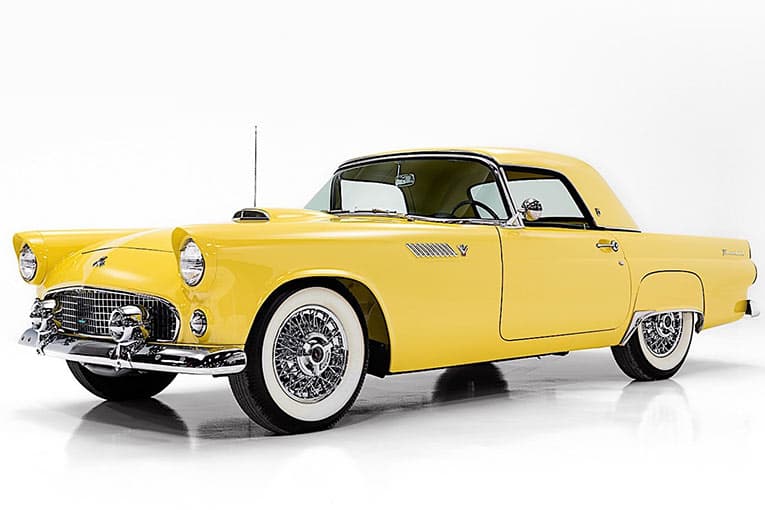
On May 18, 1953 – 17 days after his deadline – Crusoe saw a complete, painted clay model for the first time. It closely corresponded to the shape of the final first Ford Thunderbird.
Although production wouldn’t begin until the fall of 1954, making the new car a 1955 model, Ford was anxious to tell the world about it. Only one small detail remained – a name for the car. There were 5,000 names considered. Hep Cat, Beaver and Detroiter were early, yet undistinguished, front-runners. Also suggested were Runabout, Arcturus, Savile, El Tigre and Coronado. The name Thunderbird comes from the deserts of Arizona and New Mexico, where, according to Indian legend, the Thunderbird was a divine helper of man. Its great flapping wings, invisible to the eyes of mortal man, created the winds and the thunder, and gave the Indians water to live on in the dry wilderness where fate had flung them.
With the name settled and a couple of last-minute appearance changes made, the Ford Thunderbird was ready to go to market. Its first public appearance was Feb. 20, 1954, at Detroit’s first post-war auto show. The first 1955 Ford Thunderbird came off the line at Ford Motor Company’s Dearborn (Mich.) Assembly Plant on Sept. 9, 1954.
The original Thunderbird was a racy two-seater with clean, crisp lines on a 102-inch wheel base. Overall length was 175 inches, height was a low 52 inches, and the car was 70 inches wide. Standard curb weight was 3,180 pounds. The base sticker price of $2,695, included the removable hardtop, but not the soft top. Clock, tachometer, power-operated seats and a 292 CID V-8 engine also were standard equipment. However, practically none of the early Thunderbirds left the dealership without either overdrive or automatic transmission and most of the power options. Prices of the 1955 models ranged from $3,000 to $4,000.
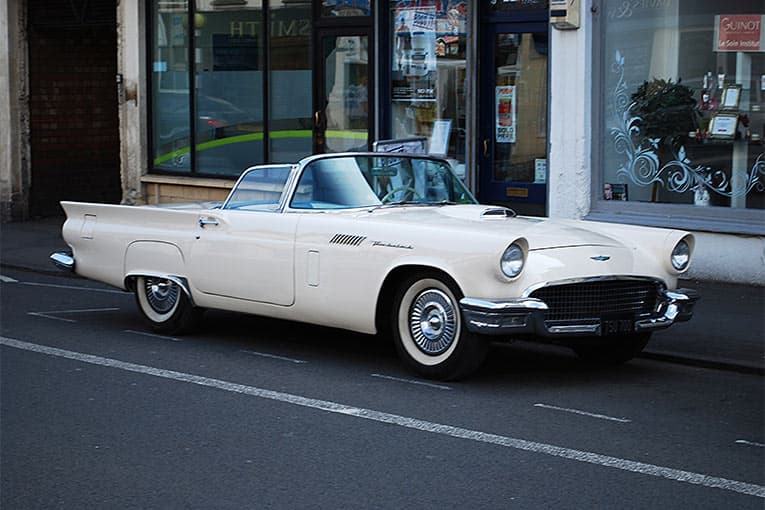
The car was an immediate smash hit. Buyers of all ages, from all walks of life described the car in terms such as “wonderful,” a “masterpiece,” “advanced automobile” and a “morale builder that is real fun and sport to drive.” One admirer instructed an American relative to buy the 1955 Thunderbird and ship it to him in Europe. The public went for the Thunderbird in a big way, placing more than 3,500 orders in the first 10-day selling period. The planning volume for the entire model year was only 10,000 units. Ford had explored an uncharted market for unique transportation and came up with a winner.
With all of its popularity, the flight of the two-seater Ford Thunderbird would be a short one. There were changes almost immediately after the car was introduced. The original design presented some problems. The cockpit needed better ventilation. Rear-quarter vision had to be improved. More trunk space was a necessity. Design changes on 1956 models corrected these deficiencies. Flip-out side vents provided better ventilation, porthole windows enhanced rear vision and an outside tire carrier added trunk space. In addition, the 1956 Thunderbird featured Ford’s new safety concept of “packaging the passengers.” Standard equipment included energy-absorbing instrument panel padding, a concave safety steering wheel, safety door latches and a shatter-resistant mirror. Safety belts were optional. Last-minute improvements, including the addition of the optional 312 CID V-8 engine, gave the second edition of the Thunderbird better handling and increased performance.
The 1957 Thunderbird was the first to have a fully padded dash surface. It featured optional Dial-O-Matic power seats and a radio that automatically adjusted the volume in proportion to the speed of the engine. It would be the last of the two-seaters. With production of 1958 models delayed, 1957 Thunderbird production continued for three extra months. The last one rolled off the assembly line December 13, 1957. The remaining 1955-1957 two-seaters are in the hands collectors and restorers and on the pages of automotive history.
